Safety and First Aid - 1 Class 5 Notes Science
Introduction
- Imagine you are playing your favourite game, and suddenly your friend trips and falls! What would you do?
- Knowing how to stay safe and help others in emergencies is important.
- That's where safety and first aid come in!
- Safety helps us avoid accidents, while first aid teaches us how to take quick action if someone gets hurt.
- Whether it's a small cut or a bigger emergency, knowing what to do can make you a hero!
- Let's learn how to stay safe and help our friends when they need us.
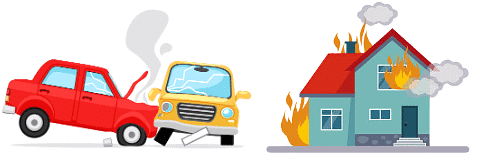 Accidents
Accidents
How do Accidents Occur?
- Many accidents happen because of negligence. Take a look at these images, some of which depict situations that could result in accidents.
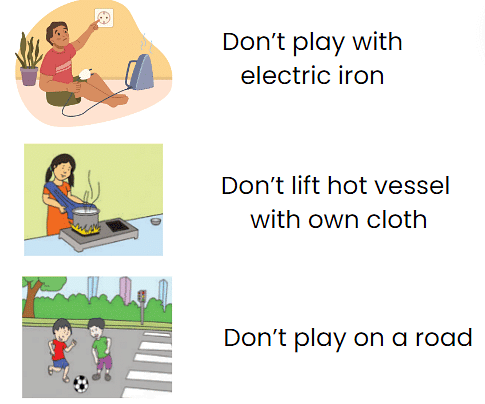
- For instance, a child playing close to a hot iron might accidentally touch it and get burned.
- Similarly, a woman using her saree to lift a pot of hot milk near a burning gas stove risks catching her saree on fire, leading to a severe accident.
- Additionally, boys playing on the road are at risk of being struck by a speeding vehicle.
Safety Rules
To avoid accidents, one should be careful as well as alert. Accidents can be avoided if we follow safety rules.1. Safety at Home
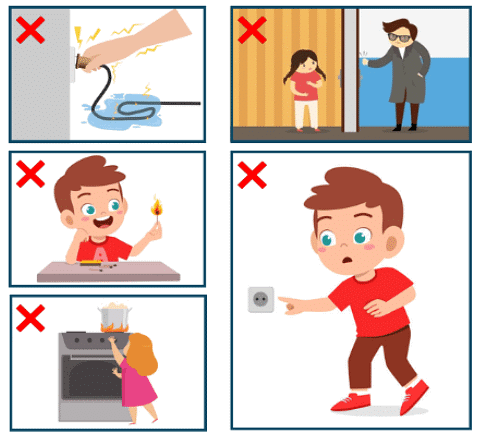 Safety at Home
Safety at Home
- Be cautious when walking on wet or slippery floors.
- Avoid throwing lit matchsticks near papers or clothes.
- Don't stack stools and chairs to reach high places; you could fall and injure yourself.
- Avoid overloading sockets with too many appliances to prevent short circuits and fires.
- Never touch electric switches or plugs with wet hands to avoid electric shocks.
- Take your time and avoid rushing up or down stairs to prevent slipping and falling.
- Don't wear nylon or synthetic clothes near fire as they can easily catch fire.
- Handle sharp objects with care.
2. Safety from Fire
A fire can be caused due to gas leakage, electrical faults, careless handling of candles, matchsticks, etc. Fire
Fire
We should follow some safety rules to prevent ourselves from fire accidents:
- Switch off the gas regulator when not in use.
- In case of a gas leakage, neither strike a match nor operate any electrical switch. Open all doors and windows and call an adult for help.
- Replace faulty gas pipes immediately.
- Check wiring and electrical appliances regularly for any faults or breaks in the wiring.
- Be careful while handling matchboxes, candles, firecrackers, etc.
- Do not wear synthetic clothes like nylon clothes when handling fire because these clothes catch fire easily.
If a person’s clothes catch fire, he/she should be rolled onto the floor until the fire is out. He/she can also be covered by a blanket to put out fire.
(a) What to Do in Case of a Fire
- A fire needs air to keep burning.
- It can be put out by cutting off its air supply or cooling down the burning substance.
- In case of small fires, this can be done by the following methods:

- Throwing mud or sand over the fire: This cuts off the air supply by covering the substance on fire. Small electric fires can be extinguished in this way.
- Pouring water over the fire: This cools down the burning substance and also cuts off its air supply.
- Using a fire extinguisher: This is a simple device to extinguish a fire. Fire extinguishers are of various types. There are special fire extinguishers for electric fires. But they all work in the same way—by cutting off the air supply to the fire
(b) Water should never be thrown over a fire caused by electricity
- Electricity can flow through the water and result in a person getting an electric shock.
- Water should also not be thrown over burning petrol or kerosene.
- These are lighter than water and would float over it and continue to burn.
- Instead, this could cause the fire to spread.
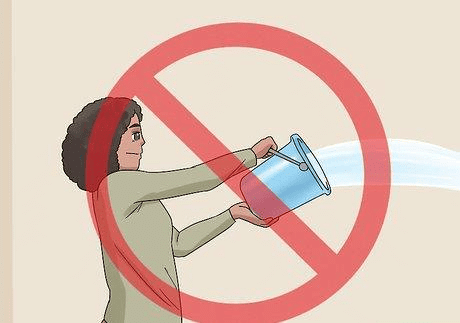
(c) What to do if Clothes Catch Fire
- If your clothes catch fire, roll on the ground. This stops the fire by cutting off its air supply.
- If there's a blanket or rug nearby, rolling in it is even better for putting out the fire.
- If someone else's clothes catch fire, use water to extinguish it.
- If water isn't available, wrap the person in a blanket, rug, or overcoat.
- However, don't keep the person covered for too long because it can lead to severe burns since the blanket traps heat. Remove the blanket once the fire is out.
3. Safety on the road
We should always be careful on the road. We should follow traffic signs to keep ourselves and others safe.
 We should always follow the following safety rules on the road:
We should always follow the following safety rules on the road:
- Cross the road at the zebra crossing or use a subway to cross the road.
- Wear a helmet while riding a two-wheeler.
- Never walk through vehicles that have stopped at a crossing.
- Do not run on the road.
- Always walk on the footpath.
- Use a safety belt while travelling in a car.
- Follow the traffic signals.
4. Safety at playground
- Do not jump off a high place; you may hurt your leg.
- Do not play unsafe games which can cause serious injuries.
- Follow the rules of the game you are playing.
- Do not fight or hit each other while playing.
Dealing With Emergency
Accidents can occur anywhere, so it's important to know what to do in these situations.
- Stay relaxed and think clearly.
- Ask an adult for assistance.
- Provide basic medical aid if you can.
- Seek medical attention if necessary.
What is First Aid?
- Sometimes in spite of being careful, accidents occur.
- A nurse or a doctor may not be immediately available when a person gets injured.
- First aid is the care given to the injured person (or the patient) before a doctor or nurse can see him.
- Proper first aid can prevent the injury from getting worse.
- Therefore, it is important to know how to give first aid in different kinds of accidents.
 First Aid Kit
First Aid Kit
First Aid for Burns
Minor Burns- The skin becomes red, and no blisters are formed.
- Put the burnt area immediately under cold water to cool the skin and prevent the inner portions of the skin from getting burnt.
- Apply an antiseptic cream or a paste of baking soda and water on the burnt area.
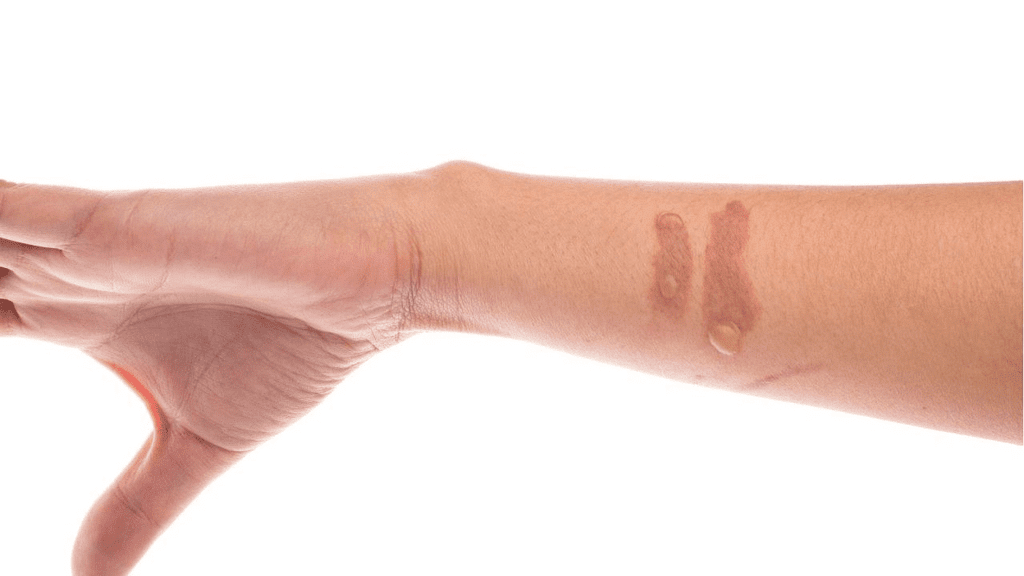 Minor BurnSevere Burns
Minor BurnSevere Burns
- If the burn forms blisters on the skin, it is more serious.
- Never break the blisters. If they do break, wash them with soap and water.
- Cover the blisters lightly with a clean piece of cloth or bandage to protect them from dust, flies and infection.
- In case of very serious burns, take the patient to a doctor at once.
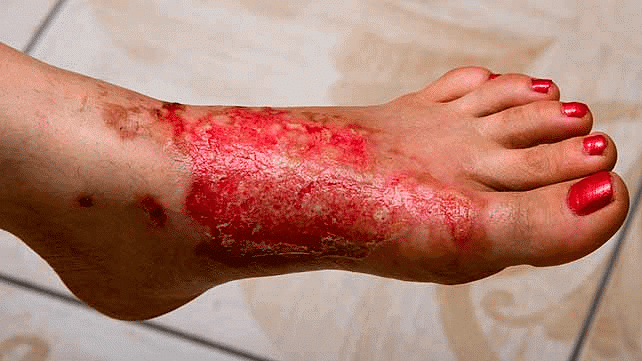 Severe Burn
Severe Burn
Chemical Burns
- Sometimes a person can get burnt by a chemical such as acid.
- In such a case, wash the burnt area immediately with plenty of water. This will wash off the chemical.
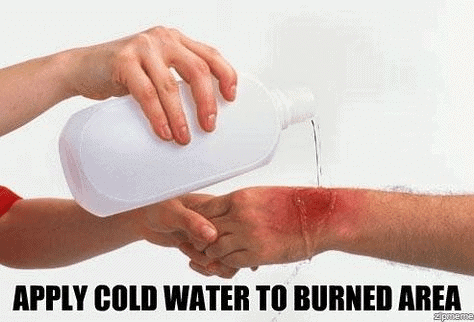
First Aid for Wounds
Even a small wound should be taken care of because germs can enter the body through cuts or wounds.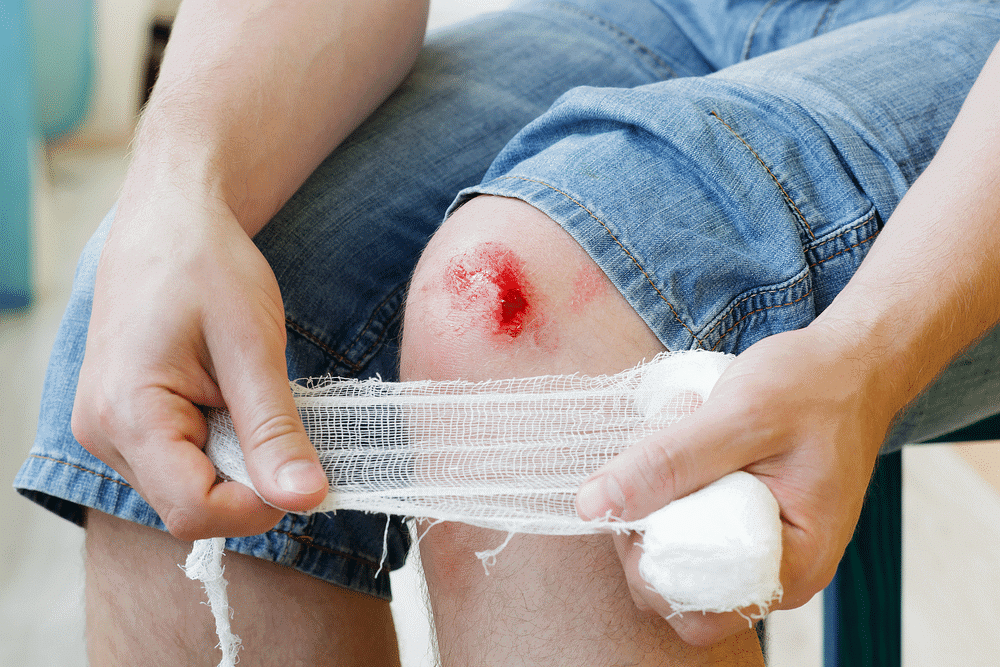
- Wash your hands with soap and water.
- Wash the wound with water and clean it with cotton wool.
- Apply tincture of iodine.
- If case of bleeding, apply ice on the wound to stop the bleeding.
- Cover the wound with a clean plaster or bandage to prevent dirt from getting into it. This also helps to stop bleeding.
- For a deep wound, he may require an injection to prevent a dangerous disease called tetanus.
- Long, deep wounds may require stitches.
- If the blood is dark red and flows evenly, place a hard pad of clean cloth on the wound and bandage tightly.
- If the blood is bright red and flowing in jerks, apply pressure on the wound. The bleeding stops because of the pressure applied.
 First Aids for Wounds
First Aids for Wounds
First Aid for Animal Bites
The bites of dogs, monkeys and some other animals can cause a very dangerous disease called rabies.- In case of an animal bite: Wash the affected area with soap and water and apply an antiseptic lotion. Cover the wound with a bandage, if required. Take the patient to the doctor immediately.
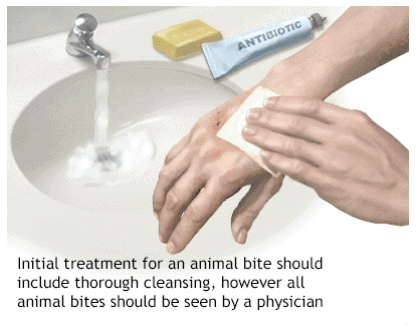
- In case of bee stings: Apply a paste of baking soda or toothpaste.
- In case of snake bite: Tie a tourniquet just above the bite to stop the flow of blood to the heart. Immediately rush the victim to a doctor.
 Snake bite
Snake bite
First Aid in Case of Fractures
Sometimes a fall may result in a broken or fractured bone. Usually, if there is swelling and great pain on moving the injured spot even 10-15 minutes after the injury, we assume that there may be a broken bone. An x-ray is done to confirm the fracture in bones.
- Do not try to move the fractured part.
- The fractured part needs support.
- If the fracture is in hand, a cloth sling can be used to give support. The patient must be taken to the hospital immediately.
- A magazine, newspaper or piece of cardboard can be tied around the fractured part to give support. This acts as a splint.

First Aid for Nose Bleed
At times, when it is very hot, the nose may bleed. The following first aid should be given:
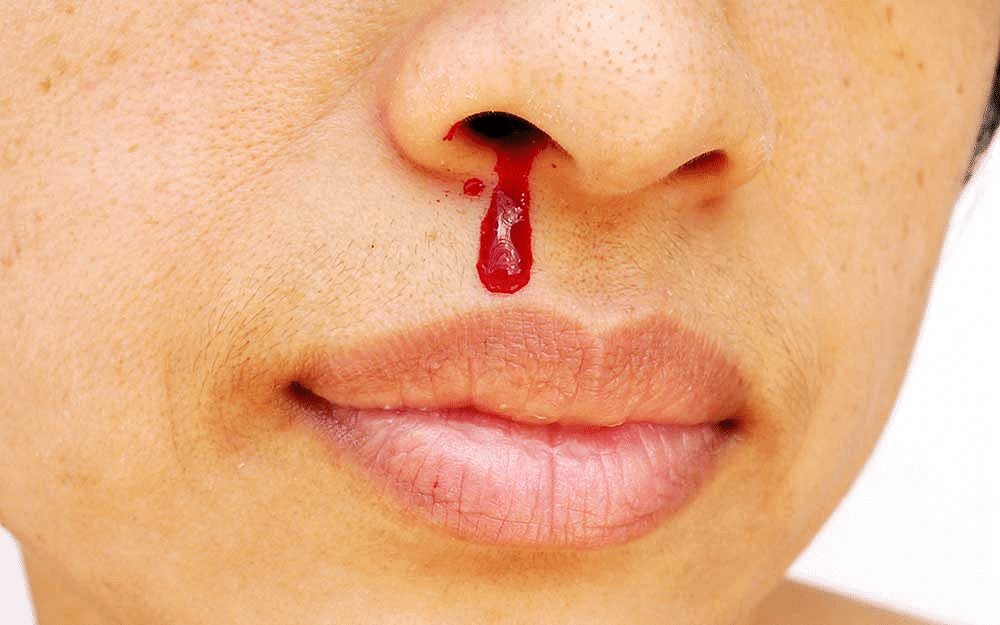 Nose Bleeding
Nose Bleeding
- Loosen the clothing around your neck.
- Sit upright with your head held back and arms folded above the head.
- Then slightly press the bleeding side of your nose firmly with your fingers.
- Get help from someone to keep an icepack or a wet cloth on your nose and the back of your neck.
- Breathe through your mouth instead of your nose.
- After the bleeding stops, do not blow your nose for a few hours.
- If the bleeding is heavy, take help from a doctor.
|
42 videos|230 docs|45 tests
|
FAQs on Safety and First Aid - 1 Class 5 Notes Science
| 1. What are the common causes of accidents? |  |
| 2. What are some important safety rules to follow? |  |
| 3. How should I respond in case of an emergency? |  |
| 4. What basic first aid skills should everyone know? |  |
| 5. Why is it important to learn about safety and first aid? |  |






















